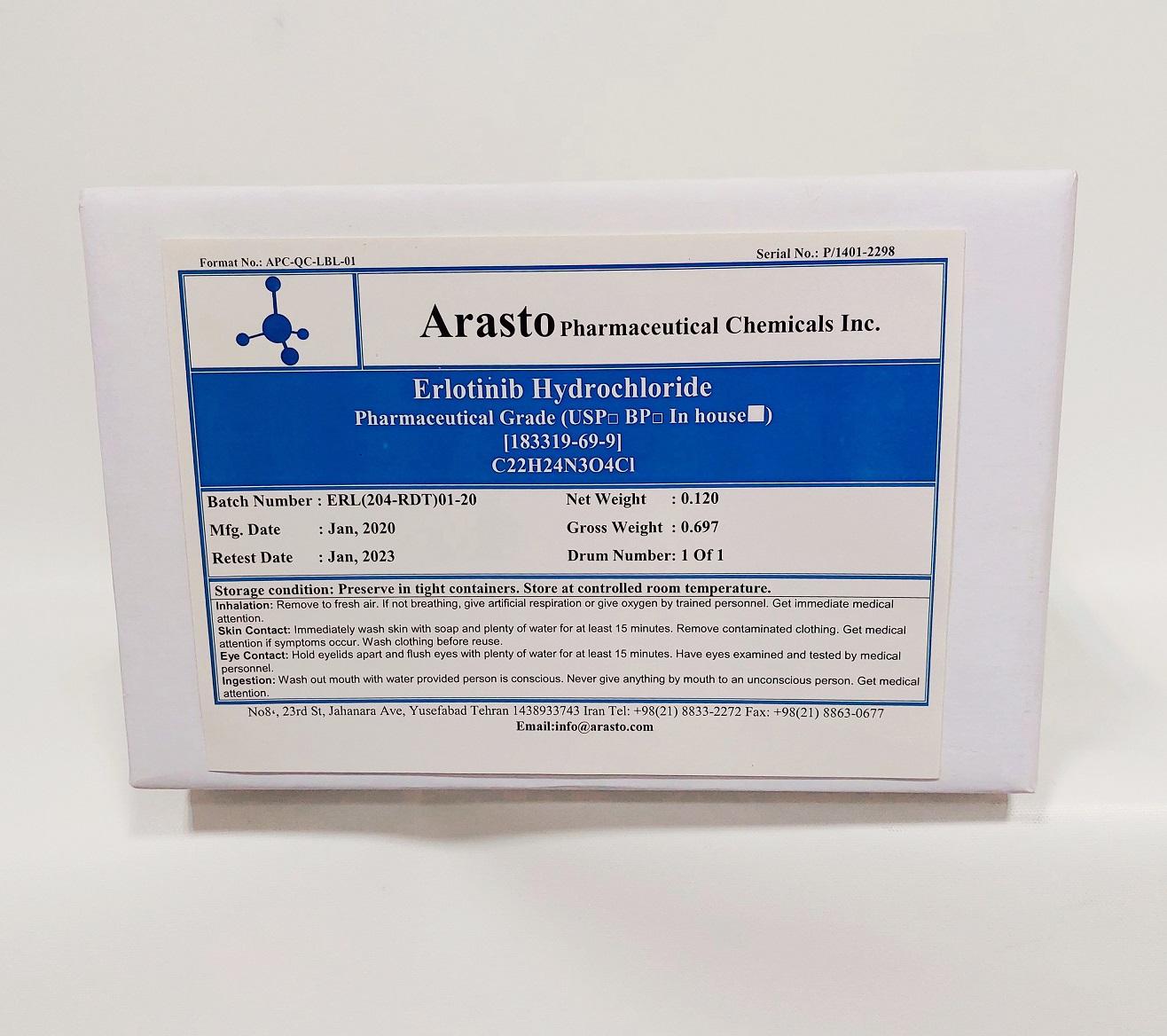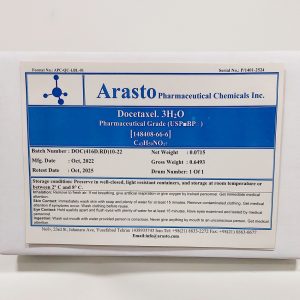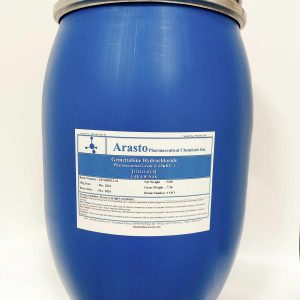Description
Description
(In-house)
- Drug Substance General Information (ICH 3.2.S.1)
1.1. Nomenclature (ICH 3.2.S.1.1)
International non-proprietary name: Erlotinib Hydrochloride (Brand Name: Tarceva, Roche, Switzerland)
Compendial name: Erlotinib Hydrochloride
Chemical name: N-(3-ethynylphenyl)-6,7-bis(2-methoxyethoxy)quinazolin-4-amine
Arasto’s code: ERL
CAS Registry Number: [183319-69-9]
1. Drug Substance General Information (ICH 3.2.S.1)
1.2 Structure (ICH 3.2.S.1.2)

. HCl
Empirical formula: C22H23N3O4.HCl
Molecular Weight: 429.94 g/mol
- Drug Substance General Information (ICH 3.2.S.1)
1.3. General Properties (ICH 3.2.S.1.3)
Erlotinib hydrochloride is a white to off-while crystalline substance. It is soluble in water and polar organic solvents such as DMSO, DMF and methanol. Erlotinib is an orally administered agent used for the treatment of advanced-stage non-small cell lung cancer (NSCLC) CLC(http://www.tarceva.com/patient/ considering/index.jsp). The pKa valve of Erlotinib has been reported to be 5.42 (http://www.roche-australia.com /fmfiles/re7229005/downloads/oncology/ tarceva-pi.pdf). Erlotinib hydrochloride is stable in acid or base (see Stability Studies). LD50 of Erlotinib hydrochloride has been reported (<5003 mg/kg oral rat; <1000 mg/kg; dermal rat http://www.ehso.emory.edu/content-guidelines /ChemicalSafetyNOIGuideline.pdf).
The determination of purity and assay of APIs require comparison of the product with their respective Reference Standards (RS) and Related Compounds (RC or known impurities). Accordingly, ICH regulations on the purity and assay of reference standard and related compounds are clearly defined and must be followed by drug substance and drug product manufacturers.
According to ICH Q7, 11.1 there are 3 types of standards. This is summarized in the following chart and discussed in detail below.

The impurities provided in the following table represent Secondary Reference Standards (SRS) that are prepared in-house by synthesis or by isolation. Each SRS has undergone extensive characterization (IR, UV, 1HNMR, 13CNMR. Mass Spec) and determination of its purity and assay (HPLC). For specification of the SRS of those products that have a monograph, the SRS is compared with a pharmacopoeia Primary Reference Standard (UV, HPLC retention time). For specification of those products that do not have a monograph (known as House Primary Standard), we compare their UV ε or ג /max, IR major absorptions, 1HNMR d (ppm) , 13 CNMR d (ppm) or HPLC retention time with values reported in the chemical literature for these compounds.

- Primary and Secondary Reference Standard (ICH 3.2.S.5)
5.1. Active Pharmaceutical Ingredient
Primary Reference Standard for erlotinib is not available from United States Pharmacopoeia. We will use a House Primary Standard (previously referred to as Working Standard) for direct control of all batches of erlotinib.
As per ICH (Q7, 11.1) and ICH (Q6, 2.11, 3.2, 3.3)House Primary Standards, which include the API and its Related Compounds, must be examined for their proof of structure (characterization), assay and purity and specification (identification by comparison). Furthermore, ICH Guideline on the Preparation of Common Technical Document (Q4M) requires that the data obtained from characterization, assay and purity and specification must be included in section 3.2.S.3.2 for Related Compounds (already discussed in that section) and section 3.2.S.5 of the DMF for the API. To this end, the House Primary Standard of the API erlotinib has undergone extensive characterization (UV, IR, 1 H NMR, 13C NMR, Mass Spec) to assure its structure, assay and purity (HPLC and/or titration) and specification .
The House Primary Standard for erlotinib was produced from a released batch of erlotinib by subjecting it to an additional crystallization from the final solvent system used in the production of the API to avoid the possibility of other polymorph formation. It was crystallized twice more to ensure high level of purity.
SPECIFICATION OF ANALYSIS
| Product: Erlotinib Hydrochloride | CAS No.: 183319-69-9 | Spec. No.: APC-QC-SPEC-379-00 | ||
| Issue Date: Apr, 2023 | Valid up to: Apr, 2024 | Reference: In-house | ||
| Tests | Specifications | |||
| Appearance | White to off white powder. | |||
| Solubility | Slightly soluble in methanol. Insoluble in acetonitrile and acetone. | |||
| Identification | Infrared Absorption | |||
| X-ray diffraction | Form A | |||
| Loss on Drying | NMT 1.0% | |||
| Residue on Ignition | NMT 0.1% | |||
| Heavy metals | NMT 20ppm | |||
| HCl content | Between 8.3% to 8.7% | |||
| Residual solvents | Toluene: Max. 890 ppm (Class II) Isopropanol: Max. 5000 ppm (Class Ш) Ethyl acetate: Max. 5000ppm (Class Ш) | |||
| Related substances (HPLC) | Erlotinib. HCl Related Compound A: NMT 0.10% Erlotinib. HCl Related Compound B: NMT 0.10% Erlotinib. HCl Related Compound C: NMT 0.10% Any individual unknown impurity: NMT 0.10% Total impurities: NMT 0.5% | |||
| Assay (HPLC) | 98.0% to 102.0% (calculated on dried basis) | |||
| Prepared by: M. Shahbazi, B.Sc.Chem. | Checked by: A. Forghani, B.Sc.Chem. | |||
| Approved by: F. Javadizadeh, M.Sc.Chem. | ||||
| Storage: Preserve in tight containers. Store at controlled room temperature. | ||||





